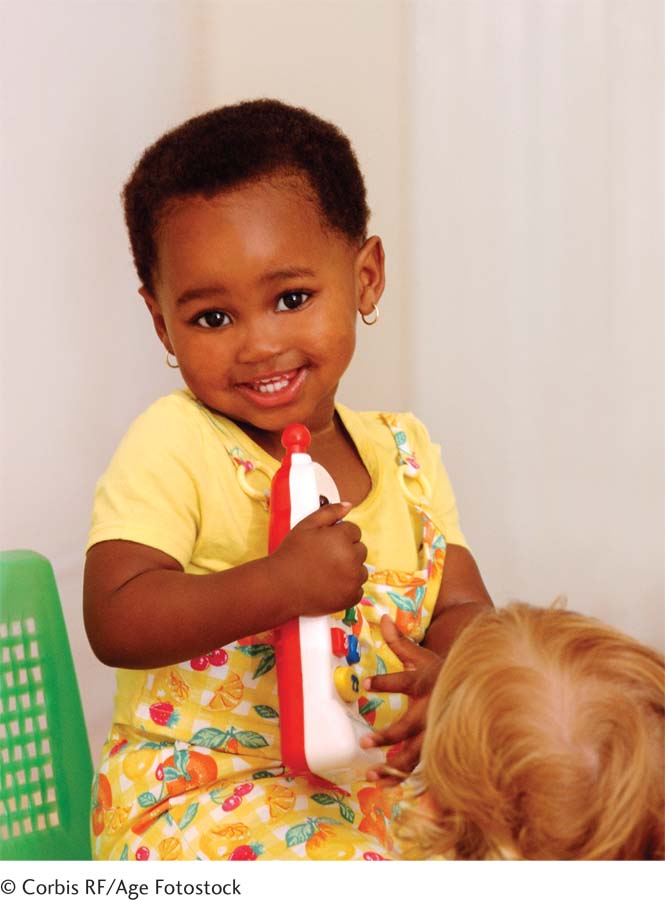Chapter Introduction
134
CHAPTER 5

135
Physical and Cognitive Development
CHAPTER OUTLINE
Setting the Context
Special Mindreading Skills
Slow-
Physical Development
Two Types of Motor Talents
Threats to Growth and Motor Skills
Childhood Obesity
INTERVENTIONS: Limiting Overweight
Cognitive Development
Piaget’s Preoperational and Concrete Operational Stages
EXPERIENCING THE LIFESPAN: Childhood Fears, Animism, and the Power of Stephen King
INTERVENTIONS: Using Piaget’s Ideas at Home and at Work
Vygotsky’s Zone of Proximal Development
INTERVENTIONS: Becoming an Effective Scaffolder
The Information-
INTERVENTIONS: Using Information-
HOT IN DEVELOPMENTAL SCIENCE: Attention-
INTERVENTIONS: Helping Children with ADHD
Wrapping Up Cognition
Language
Inner Speech
Developing Speech
Specific Social Cognitive Skills
Constructing Our Personal Past
Making Sense of Other Minds
HOT IN DEVELOPMENTAL SCIENCE: Autism Spectrum Disorders
As the 3-
“We do free play, then structured games. Then we go outside. At 11 we have snack. We focus on the skills the kids need for school and life: sit still; follow directions; listen; share. During free play, they need to remember three rules: four kids to an activity center; clean up before you leave; don’t take the toys from one center when you go to another place.”
In the kitchen corner, Kanesha is pretending to scrub pots. “What is your name?” “You know!” says Kanesha, looking at me as if I’m totally dumb. “This is a picnic,” Kanesha continues, giving me a plate: “Let’s have psghetti and Nadia makeacake.” We are having a wonderful time talking as she loads me up with plastic food. The problem is that we aren’t communicating. Who is Nadia, that great cook? Then some girls run in with Barbies from the dress-
I move to the crafts table, where Moriah, a dreamy frail girl, and Josiah are surrounded by paper: “Hey!” Moriah yells, after Josiah cuts his paper into pieces, “Josiah has more than me!” Josiah tenderly gives Moriah his bunny, and gives me a heart-
Ms. Angela shows the class cards picturing a sun, an umbrella with raindrops, and clouds, and asks: “What is the weather today?” Josiah proudly picks the umbrella. “How many people think Josiah is right?” Everyone raises a hand. “Who feels it’s sunny?” Everyone yells: “Me!” “Who thinks it’s cloudy?” Everyone agrees. Then Ms. Angela puts on a tape: “Dance fast, fast . . . slower slower . . . Now speed up!” The kids frantically dance around, and it’s time to go outside. Soon the wind starts gusting (it really is about to rain), and everyone gets excited: “Let’s catch the wind. . . . Oh, he ran away again!” And now (whew!) it’s 11:00 and time for snack.
These 3-
Before tackling these topics, let’s explore why our species needs so much time to mentally grow up.